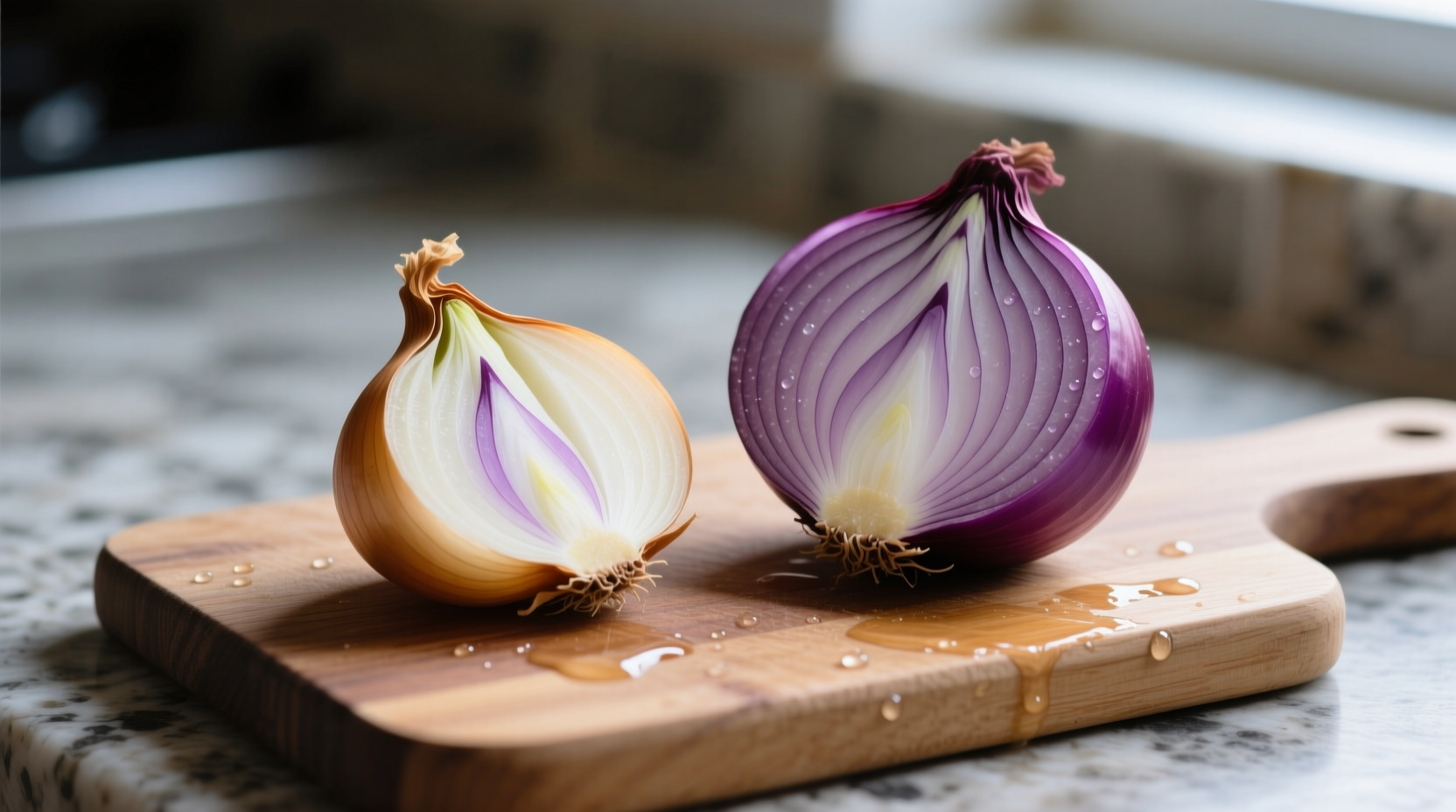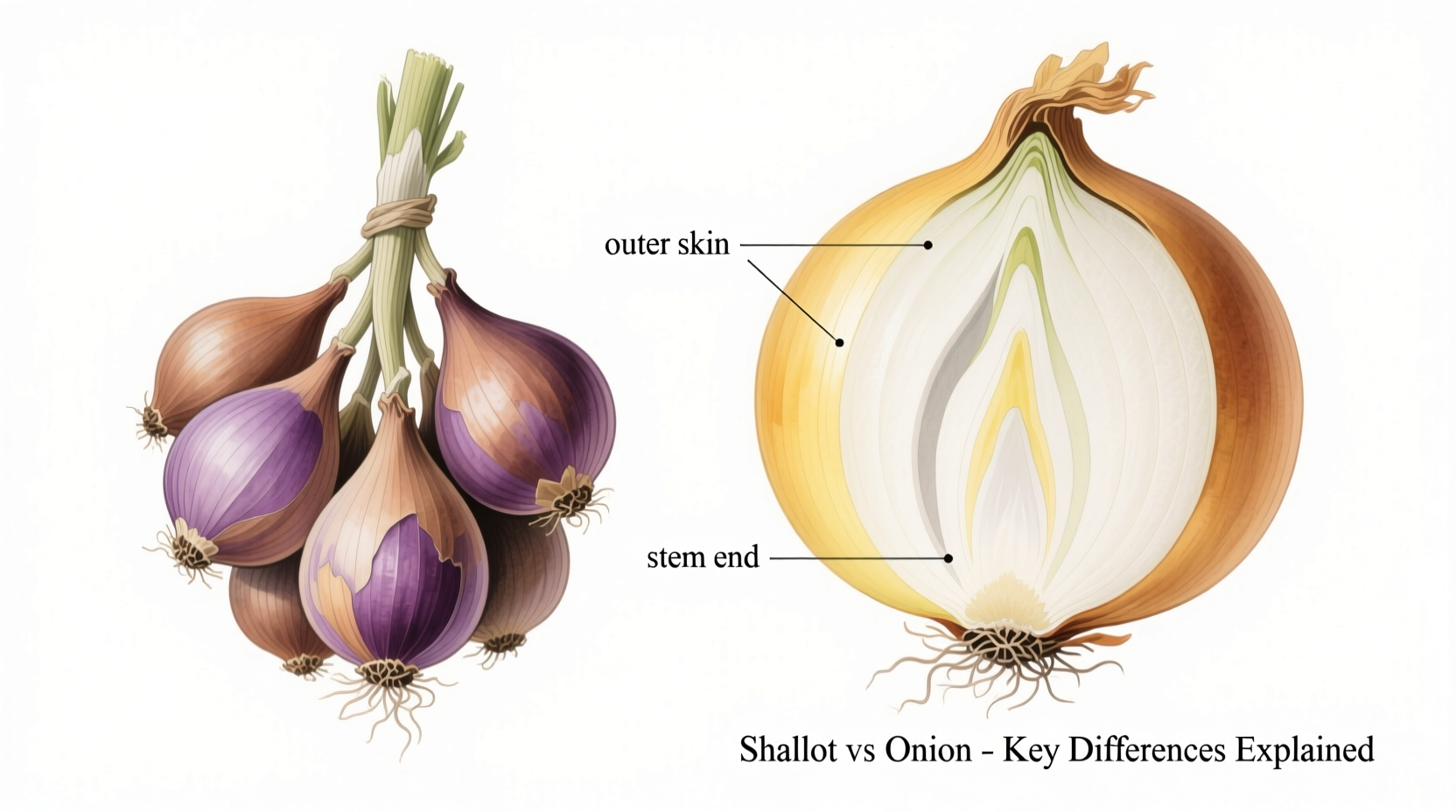Ever stood in the grocery aisle confused by the onion family? Understanding what's the difference between a shallot and an onion transforms your cooking. This guide cuts through the confusion with actionable insights from professional kitchen experience.
Spotting the Difference: Visual Identification Guide
At first glance, shallots and onions appear similar, but key visual cues tell them apart. Shallots grow in clusters like garlic, with coppery skin and off-white flesh tinged purple. Onions typically grow as single bulbs with thicker, papery skin in yellow, red, or white varieties.

Flavor Profile Comparison: When Taste Matters Most
The fundamental difference between shallot and onion lies in flavor chemistry. Shallots contain more fructose and less sulfur compounds, creating a milder, sweeter profile with delicate garlic undertones. Onions deliver stronger pungency that intensifies when cooked.
Professional chefs at the Culinary Institute of America note that shallots' complex flavor remains consistent whether raw or cooked, while onions undergo dramatic flavor transformation through caramelization. This explains why shallots excel in vinaigrettes and raw applications where onions would overwhelm.
| Characteristic | Shallot | Onion |
|---|---|---|
| Flavor Intensity (raw) | Mild, sweet with garlic notes | Sharp, pungent |
| Cooked Flavor Transformation | Maintains complexity | Caramelizes to deep sweetness |
| Best Raw Applications | Vinaigrettes, salsas, tartares | Salsas, sandwiches (red onions) |
| Substitution Ratio | 1 shallot = ½ small onion | ½ small onion ≠ 1 shallot |
Culinary Applications: Choosing the Right Allium
Understanding when to use shallots instead of onions separates amateur from professional cooking. Shallots' nuanced flavor shines in:
- Classic French sauces (béarnaise, demi-glace)
- Raw applications where onion would dominate
- Fine-dining reductions requiring subtle complexity
- Vinaigrettes that won't overpower delicate greens
Onions excel where robust flavor and texture matter:
- Caramelizing for depth in soups and stews
- Hearty dishes requiring substantial texture
- Pickling (red onions)
- Grilling and roasting applications
The USDA FoodData Central confirms nutritional differences impact cooking outcomes. Shallots contain 23% more fructose than yellow onions, explaining their superior raw performance. Their lower water content (76% vs 89% in onions) creates more concentrated flavor in reductions.
Substitution Guidelines: What Actually Works
Many home cooks wonder can I substitute shallots for onions in recipes. The answer depends on context:
Successful substitutions:
- Use 1½ shallots per small onion in vinaigrettes
- Replace 1 shallot with ½ small onion in cooked sauces
- Combine equal parts shallot and onion for balanced flavor
Failed substitutions:
- Using raw onion in place of shallot in tartare
- Substituting shallots for onions in French onion soup
- Replacing pickled shallots with pickled onions
Culinary professionals follow this rule: shallots enhance, onions dominate. When what does a shallot taste like compared to onion matters most, remember shallots provide background harmony while onions take center stage.
Storage and Preparation Tips
Proper handling preserves each allium's unique qualities:
- Store shallots in cool, dark place (2-3 months)
- Keep onions in well-ventilated area (1-2 months)
- Never refrigerate whole bulbs (causes sprouting)
- Cut shallots root-end first to minimize tearing
- Soak sliced onions in ice water for milder raw use
When preparing shallots, chefs recommend peeling under running water to preserve delicate layers. Their thinner skin makes them more vulnerable to drying out than onions' protective papery layers.
Common Mistakes to Avoid
Even experienced cooks make these errors when handling shallot vs onion:
- Using equal substitution ratios (shallots are more potent)
- Cooking shallots as long as onions (they burn faster)
- Storing both in plastic bags (traps moisture)
- Using red onions as 1:1 shallot substitute (wrong flavor profile)
Remember that French shallots (true shallots) differ from what Americans often call "shallots" (eschalions). True shallots have superior flavor complexity but are harder to find outside specialty markets.











 浙公网安备
33010002000092号
浙公网安备
33010002000092号 浙B2-20120091-4
浙B2-20120091-4